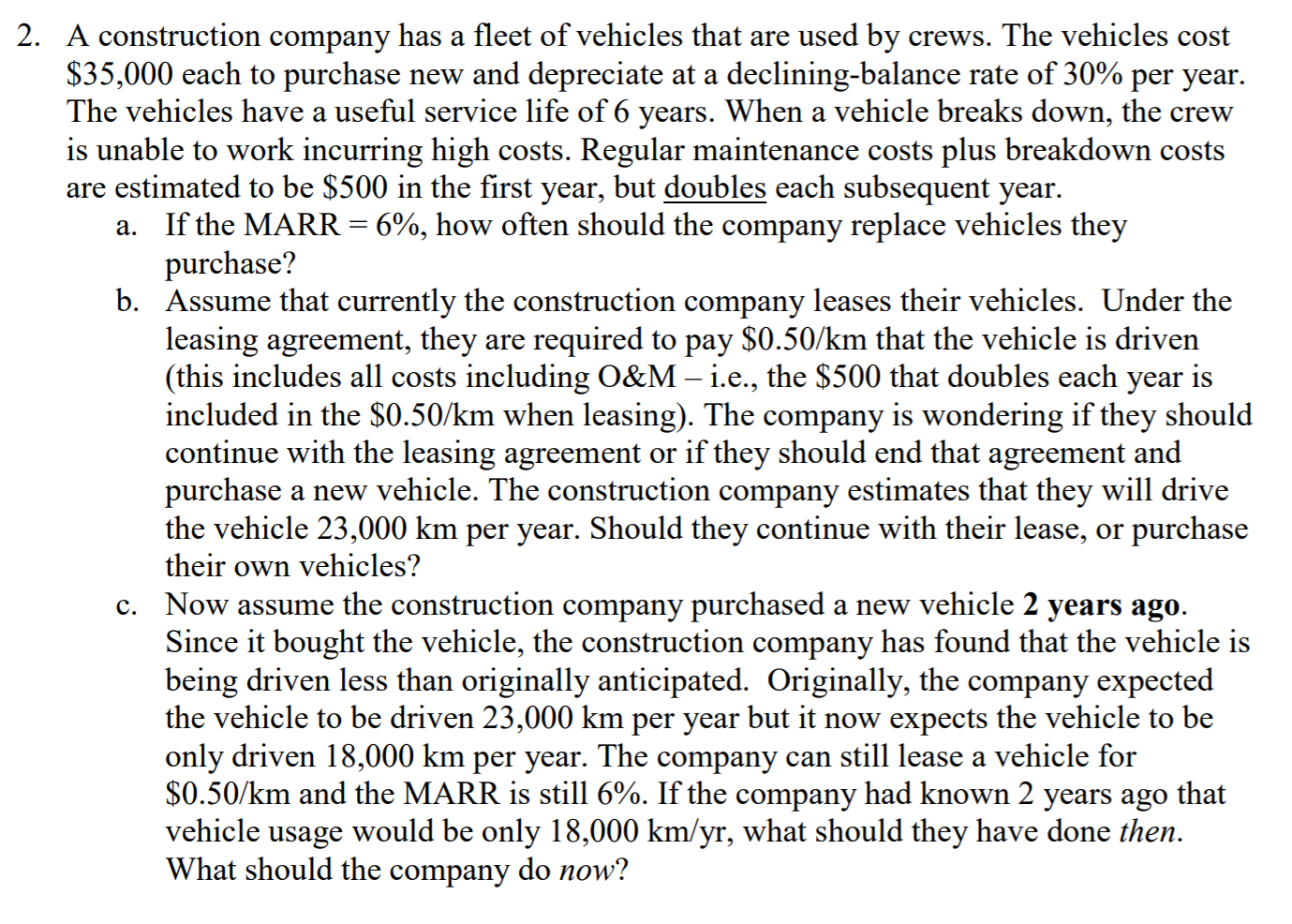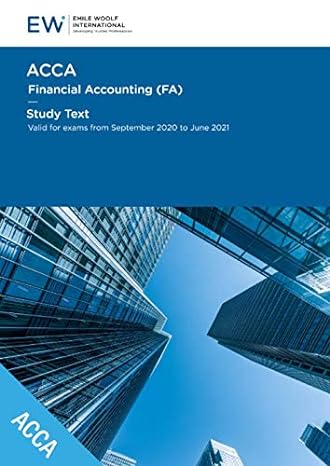
2. A construction company has a fleet of vehicles that are used by crews. The vehicles cost $35,000 each to purchase new and depreciate at a declining-balance rate of 30% per year. The vehicles have a useful service life of 6 years. When a vehicle breaks down, the crew is unable to work incurring high costs. Regular maintenance costs plus breakdown costs are estimated to be $500 in the first year, but doubles each subsequent year. a. If the MARR = 6%, how often should the company replace vehicles they purchase? b. Assume that currently the construction company leases their vehicles. Under the leasing agreement, they are required to pay $0.50/km that the vehicle is driven (this includes all costs including O&M - i.e., the $500 that doubles each year is included in the $0.50/km when leasing). The company is wondering if they should continue with the leasing agreement or if they should end that agreement and purchase a new vehicle. The construction company estimates that they will drive the vehicle 23,000 km per year. Should they continue with their lease, or purchase their own vehicles? c. Now assume the construction company purchased a new vehicle 2 years ago. Since it bought the vehicle, the construction company has found that the vehicle is being driven less than originally anticipated. Originally, the company expected the vehicle to be driven 23,000 km per year but it now expects the vehicle to be only driven 18,000 km per year. The company can still lease a vehicle for $0.50/km and the MARR is still 6%. If the company had known 2 years ago that vehicle usage would be only 18,000 km/yr, what should they have done then. What should the company do now? 2. A construction company has a fleet of vehicles that are used by crews. The vehicles cost $35,000 each to purchase new and depreciate at a declining-balance rate of 30% per year. The vehicles have a useful service life of 6 years. When a vehicle breaks down, the crew is unable to work incurring high costs. Regular maintenance costs plus breakdown costs are estimated to be $500 in the first year, but doubles each subsequent year. a. If the MARR = 6%, how often should the company replace vehicles they purchase? b. Assume that currently the construction company leases their vehicles. Under the leasing agreement, they are required to pay $0.50/km that the vehicle is driven (this includes all costs including O&M - i.e., the $500 that doubles each year is included in the $0.50/km when leasing). The company is wondering if they should continue with the leasing agreement or if they should end that agreement and purchase a new vehicle. The construction company estimates that they will drive the vehicle 23,000 km per year. Should they continue with their lease, or purchase their own vehicles? c. Now assume the construction company purchased a new vehicle 2 years ago. Since it bought the vehicle, the construction company has found that the vehicle is being driven less than originally anticipated. Originally, the company expected the vehicle to be driven 23,000 km per year but it now expects the vehicle to be only driven 18,000 km per year. The company can still lease a vehicle for $0.50/km and the MARR is still 6%. If the company had known 2 years ago that vehicle usage would be only 18,000 km/yr, what should they have done then. What should the company do now







